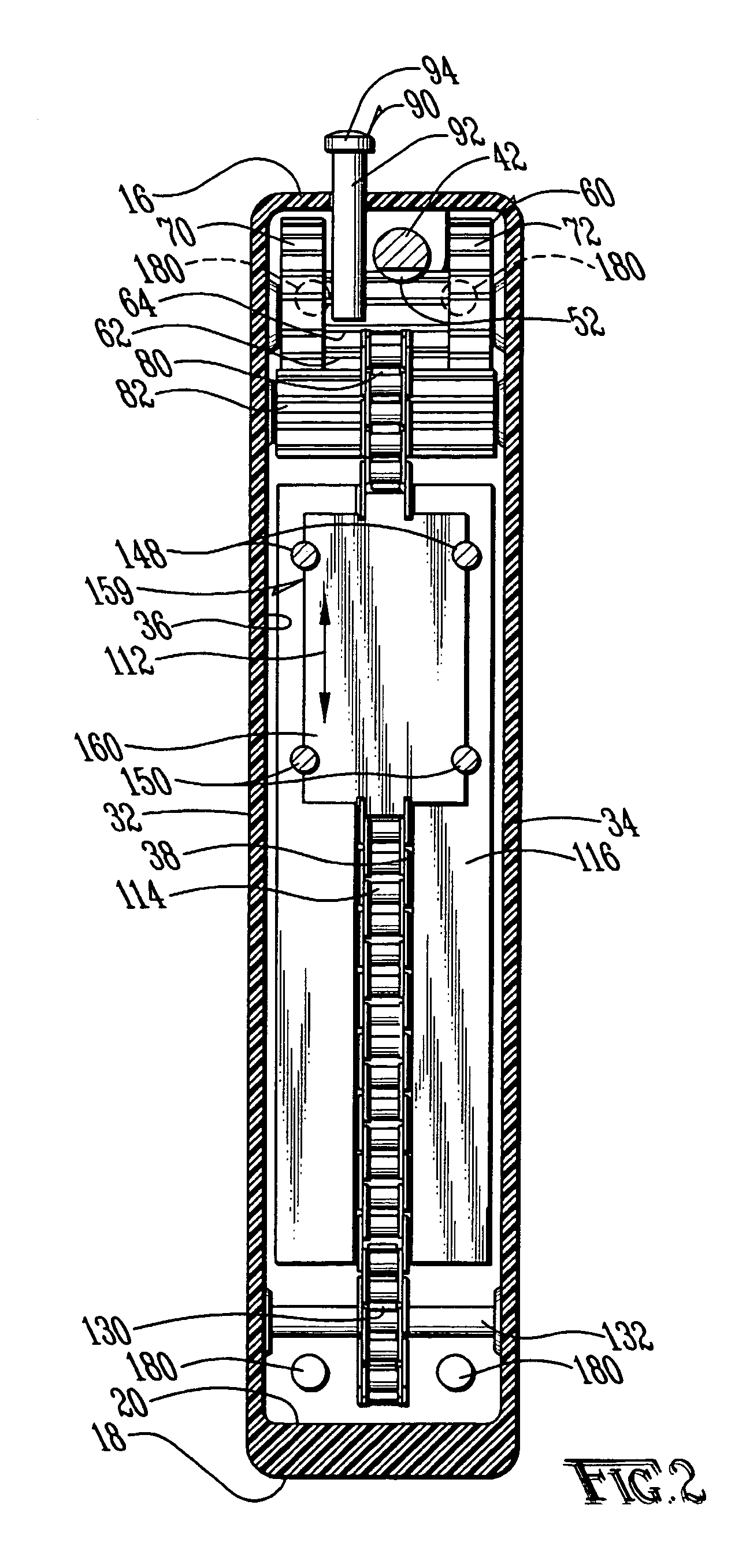Multipurpose tooth paste dispenser
a multi-purpose, dispenser technology, applied in the field of dispensers, can solve the problems of toothpaste waste, large loss of tube contents, and spoilage of the general appearance and neatness of the room, and achieve the effect of maintaining a sanitary condition
- Summary
- Abstract
- Description
- Claims
- Application Information
AI Technical Summary
Benefits of technology
Problems solved by technology
Method used
Image
Examples
Embodiment Construction
[0022]Referring to the figures, it can be understood that the present invention is embodied in a toothpaste tube squeezing mechanism 10.
[0023]Mechanism 10 comprises a hollow housing 12 which includes a first wall 14 that is a rear wall when the housing is in a use orientation and which can be mounted on a support surface, such as a wall W or the like when the mechanism is in use. Housing 12 further includes a second wall 16 which is a top wall when the housing is in a use orientation such as shown in FIG. 1 and a third wall 18 which is a bottom wall when the housing is in a use orientation. The bottom wall has a first surface 20 which is an inside surface when the housing is in a use orientation, an indentation 22 in the inside surface and a dispensing hole 24 defined therethrough at the indentation. The use of the indentation and dispensing hole will be understood from the following description.
[0024]Housing 12 further includes a longitudinal axis 28 which extends between the top w...
PUM
 Login to View More
Login to View More Abstract
Description
Claims
Application Information
 Login to View More
Login to View More - R&D
- Intellectual Property
- Life Sciences
- Materials
- Tech Scout
- Unparalleled Data Quality
- Higher Quality Content
- 60% Fewer Hallucinations
Browse by: Latest US Patents, China's latest patents, Technical Efficacy Thesaurus, Application Domain, Technology Topic, Popular Technical Reports.
© 2025 PatSnap. All rights reserved.Legal|Privacy policy|Modern Slavery Act Transparency Statement|Sitemap|About US| Contact US: help@patsnap.com



